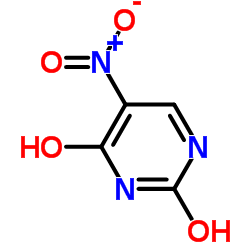Catabolism of 5-fluoro-2'-deoxyuridine by isolated rat intestinal epithelial cells.
F H Lin, W M Williams
Index: Proc. Soc. Exp. Biol. Med. 189(3) , 353-61, (1988)
Full Text: HTML
Abstract
The kinetics of conversion of 5-fluoro-2'-deoxyuridine (FdUrd) to 5-fluorouracil (FUra) by isolated rat intestinal epithelial cells was investigated. Also, the effects of potential inhibitors of this reaction, which is catalyzed by uridine phosphorylase and thymidine phosphorylase, were determined. A 2.5% suspension of isolated cells was incubated with FdUrd or FUra, and at specific times cells were lysed with perchloric acid and fluoropyrimidines were determined by high-performance liquid chromatography. During a 25-min incubation with either FdUrd or FUra, the amount of drug in the incubation system (total volume 0.8 ml) fell by less than 5%. However, in the presence of FdUrd, the amount of FUra increased linearly over 25 min. The apparent Vmax and Km for FUra formation were 17-27 nmole/mg DNA/min and 1.6-2.5 mM, respectively. With each nucleoside phosphorylase inhibitor, the apparent Km increased but Vmax was unaffected. The apparent Ki values were as follows (in mM): 5-nitrouracil (an inhibitor of both uridine phosphorylase and thymidine phosphorylase), 0.12; 4-thiothymine (a uridine phosphorylase-selective inhibitor), 1.52; and 6-benzyl-2-thiouracil (a thymidine phosphorylase-selective inhibitor), 0.73. It was concluded that intestinal epithelial cells are capable of degrading FdUrd to FUra and that the cells possess both uridine phosphorylase and thymidine phosphorylase activity.
Related Compounds
| Structure | Name/CAS No. | Molecular Formula | Articles |
|---|---|---|---|
 |
2,4-Dihydroxy-5-nitropyrimidine
CAS:611-08-5 |
C4H3N3O4 |
|
Phenobarbital induction and chemical synergism demonstrate t...
2014-12-01 [Antimicrob. Agents Chemother. 58(12) , 7475-83, (2014)] |
|
Inhibition of UDP-glucuronyltransferase activity in rat live...
1995-11-01 [Comp. Biochem. Physiol. C, Pharmacol. Toxicol. Endocrinol. 112(3) , 321-5, (1995)] |
|
Thymidine phosphorylase inhibitors with a homophthalimide sk...
2001-07-01 [Biol. Pharm. Bull. 24(7) , 860-2, (2001)] |
|
The significance of 3H-thymidine degradation in cell culture...
1988-09-01 [APMIS 96(9) , 768-72, (1988)] |
|
[Conformational analysis of 5-substituted uracil].
1989-01-01 [Biofizika 34(5) , 753-7, (1989)] |